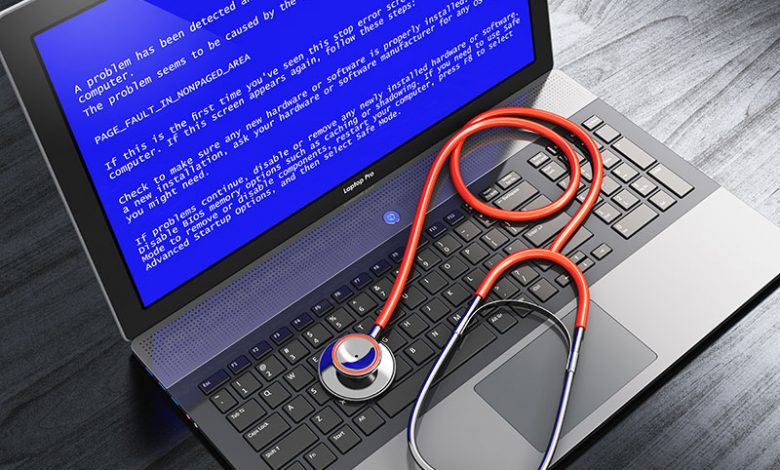
The Unsupported Processor Blue Screen error is a problematic issue recently reported by users after installing Microsoft's optional update, KB5029351. This problem has left many users facing the dreaded 'Blue Screen of Death' (BSOD), an error screen displayed in Windows operating systems after a fatal system error, also known as a system crash. The BSOD error message displays a 'UNSUPPORTED_PROCESSOR' prompt, indicating that the processor does not satisfy the system requirements for the updated version of Microsoft Windows.
The main cause of the Unsupported Processor Blue Screen error is the installation of the optional update KB5029351. Microsoft released this update to improve the features and experiences of Windows 11 version 22H2, yet it has unfortunately resulted in system crashes for some devices.
Table of Contents
Affected Systems
Many reports indicate that the Unsupported Processor Blue Screen error mainly affects users with MSI motherboards. When updated with the latest BIOS version, these motherboards become incompatible with the update KB5029351 provided by Microsoft. In these cases, the system crashes and displays the BSOD error message after the device reboots. The issue is confined to Windows 11 version 22H2 and has been reported on Windows 10 version 22H2 and Windows 11 version 21H2.
Compatibility Check with Windows 11 22H2
Following the reports of the BSOD error, users must first check their systems' compatibility with the update KB5029351 before proceeding to install it. Users should also confirm the compatibility of their processor with Windows 11 version 22H2 with the help of the available Windows 11 compatibility check tools. Compatibility checks made in advance can prevent the system from crashing and help users avoid the dreaded Unsupported Processor Blue Screen issue.
Identifying Solutions
Several solutions can be applied to mitigate and resolve the Unsupported Processor Blue Screen issue. These include running the inbuilt Windows Troubleshooter, rolling back to previous driver versions, updating all device drivers, utilizing the automatic repair feature, and updating the BIOS firmware.
Running the Blue Screen Troubleshooter
Opening the Settings app and navigating to the 'Update & Security' section allows users to access the 'Troubleshoot' menu. From there, selecting 'BSOD' from the right pane followed by 'Run the troubleshooter' initiates the tool that can address various BSOD problems. Following the on-screen instructions helps the troubleshooter effectively to resolve the UNSUPPORTED_PROCESSOR error.
Rolling Back to the Previous Driver Version
If the error occurred after updating any driver, rolling back the driver to its previous version could solve the problem. This can be done by selecting 'Device Manager' from the Power User Menu (opened by pressing Windows Key + X), right-clicking the problematic driver, and choosing 'Properties.' In the 'Driver' tab, the 'Roll Back Driver' option can be selected to revert the driver to its previous version.
Updating All Device Drivers
Out-of-date device drivers could be a cause of the issue. Thus, updating them is a sensible step in addressing the problem. From the Power User Menu, 'Device Manager' can be selected. Choosing a driver and right-clicking on it reveals the 'Update Driver Software' option, and selecting 'Search automatically for updated driver software' allows Windows to find and install the appropriate driver. This process should be repeated for all drivers.
Utilizing Automatic Repair
If the error persists, using the Automatic Repair feature can be helpful. Windows Automatic Repair tool is designed to diagnose and fix issues preventing the system from starting up. It checks your computer for the problem and then tries to fix it so it can start correctly.
Updating BIOS Firmware
An outdated BIOS firmware can often lead to compatibility issues; thus, updating it should help resolve the error. This can usually be done by downloading the latest firmware from the motherboard manufacturer's website and following their instructions for the update process. However, caution should be taken as an incorrectly performed BIOS update can lead to serious system issues.
Safe Mode and Advanced Startup Options
Suppose the steps mentioned above yield no results. In that case, you may need to try them again after booting Windows in Safe Mode or using Advanced Startup Options, another effective strategy for troubleshooting and resolving the Unsupported Processor Blue Screen issue. This approach typically involves accessing the BSOD Troubleshooter, enabling 'Automatic Repair' mode after multiple restarts, and rolling back the problematic update using Command Prompt in Advanced Startup Options.
Accessing the BSOD Troubleshooter
When booting in Safe Mode, you can limit the number of drivers and services loaded, helping to eliminate potential software conflicts that may be causing the UNSUPPORTED_PROCESSOR error. Once Windows has successfully booted into Safe Mode, you can access the BSOD Troubleshooter in the 'Update & Security' settings and run it to identify and fix any issues.
Enabling 'Automatic Repair' Mode After Multiple Restarts
If your PC does not start correctly, Windows will automatically launch the Automatic Repair mode after several unsuccessful startup attempts. In this mode, Windows attempts to diagnose and fix any issues preventing your PC from starting. If the UNSUPPORTED_PROCESSOR error prevented a successful boot, the 'Automatic Repair' mode could help resolve this problem.
Rolling Back the Update using Command Prompt in Advanced Startup Options
If the UNSUPPORTED_PROCESSOR error persists, you can roll back the problematic update. By booting into Advanced Startup Options (achieved by restarting the computer while holding the 'Shift' key), you can opt to 'Troubleshoot' and then choose 'Advanced Options.' From there, select the 'Command Prompt.' Typing in and running specific commands such as 'bootrec.exe /rebuildbcd,' 'bootrec.exe /fixmbr,' and 'bootrec.exe /fixboot' can restore the system to working order. In this context, running a 'chkdsk' command can check the integrity of the hard drive and repair any found errors, which could be the underlying cause of the problem.
Warnings for Unsupported Hardware Installation
While addressing the 'Unsupported Processor' Blue Screen problem, it's vital to understand and consider the potential dangers of bypassing system requirements and issuing hardware installations not supported by your current system. This includes recognizing integral factors, such as the importance of a compatible processor, and utilizing diagnostic tools like the BSOD log file.
Trust Platform Module (TPM) and specific system requirements are in place because they ensure optimal performance and security of your Windows system. Bypassing these could likely result in problems such as the 'Unsupported Processor' BSOD error. This error typically occurs when a processor doesn't support the instructions required for Windows 10 or 11 to run correctly. There's also an elevated risk of security vulnerabilities and significant performance compromise when these system requirements are bypassed.
A compatible processor plays a crucial role in maintaining your system's smooth operation and performance. It's necessary to ensure that your processor meets the hardware requirements and works properly with Windows 10 or 11. If the processor isn't fully compatible with your Windows version, software conflicts and issues such as the 'Unsupported Processor' error can arise, potentially impacting system performance and stability.
Locating and Utilizing BSOD Log File for Fixes
Another recommendation is to leverage the BSOD log file to aid in troubleshooting efforts. This log file contains valuable information about the system crash and the factors that may have contributed to it, such as driver issues or hardware conflicts. This diagnostic data can provide a more informed perspective when pinpointing the primary cause of the 'Unsupported Processor' error and deciding on the most effective fixes. You should, therefore, locate and utilize this log file as part of their troubleshooting approach.




